TENS device, electric pulse massager with eight programs
The use of pulses with different effort and frequency helps in alleviating the effects of strokes, stiffness of the nerves, pain in the spine and joints, by moving the muscles, which in turn activates the blood circulation in the area targeted by the pulses in the body.
Gives a feeling of a complete massage of the area.
Device advantages:
It contains 8 different programs for the effect of muscle contraction and relaxation, such as Chinese acupuncture, cupping, methods, soft massage, and a program designed to facilitate weight loss.
It consists of two adhesive tapes attached to the beginning and end of the muscle in the body and determines the strength of the electrical impulses from 1 to 15
and desired programme.
Crystal screen to operate the device in English and Chinese
Powered by x2AAA battery
It contains several massage and pulse level options
The possibility of setting the time for each program and works for...
Comes in several colours
Package contents:
- pulse device
- 2 stickers
- Adhesive base
- Wires with conductive ends between the adhesive and the device
- 2 AAA batteries
- Device manual in English
It can be powered by the charger cable connection or via the laptop connection ( not included with the device )
Package Type :
Paper carton
Package dimensions:
23cm*18.5cm*4.5cm
Country of origin (manufacture) :
China
General information for the use of electrical impulse devices
Rule for using the electric pulse device:
- Start with a pair of stickers connected to two wires from the same single plug and connected to the right or left outlet. The distance when placing the stickers on the body does not exceed 15 cm. The farther the distance, the weaker the sensation of electrical impulses.
- The adhesives must be good conductors of electricity by making sure of two things, the presence of the sticky substance and its cleanliness, secondly, the cleanliness of the body skin and the absence of materials that prevent the adhesive adhesion such as the presence of oil or cream or the presence of thick hair that prevents the electrical conduction of the muscle under the skin and making sure that it is connected to the body by pressing on it.
- Choose the muscles to place the stickers on, such as the muscles of the back, legs, hands and abdomen.
- * The stickers should not be placed on bones, nerves, or sensitive places in the body, such as near the heart or eyes.*
- Gradually increase the strength of the electricity, starting with a feeling of numbness and gradually increasing the force until you feel the strength of the electricity, the movement of the muscle, the observation of muscle contractions, and the selection of the appropriate program.
Pictures to illustrate the method of placing the stickers and the distance between them:
To use the device on the leg, for example, we use one exit, not two *Use 2 stickers* A nut of stickers is placed in the two wires connected to one plug *Do not put an adhesive with a wire from one plug and another wire from another plug*, and you choose the muscle you want to activate or move and put one of the sticks either on top The muscle or next to it and puts the other close to it as well, and operates the device and chooses the program of the pulses and the intensity and strength of the pulses.
For example, for the back, two wires are taken from one outlet, and they are clamped with two adhesive tapes. The right of the back is placed close to each other, one at the top and one at the bottom, or one on the right side and the second on the left *provided that the distance is close, not exceeding 15 cm *, and for the second exit, the two wires are taken and connected with adhesive, and connected with two adhesives on the right side at a close distance from some.
TENS unit electrode placement method
Pain relief methods are the most widely used in physical therapy. When a patient is in pain, they find it difficult to participate in the rehabilitation regimen. One of the main goals of pain management in physical therapy is to have a non-invasive and effective method. Transcutaneous electrical nerve stimulation (TENS) units are an effective pain management tool that can be used in many categories of patients.
How does TENS work?
When using a TENS unit, two pads are placed over or near the affected area of the body. The unit emits an electrical signal TENs Electrode Placement for Back Pain - ComboCare TENS & Ultrasound when activated. This electrical impulse stimulates the release of natural opioid analgesic chemicals.
Part of effective use of a TENS unit to relieve muscle pain involves understanding where to place the electrodes. In general, TENS electrodes must be placed around the perimeter of the area to be treated in order to be effective. This allows the current to travel through the nerve fibers within the affected muscle. However, it should be noted that if the area cannot be reached for some reason, for example migraine pain felt in the head and face, TENS can still be used effectively. In this case, the electrodes will be placed in the corresponding area, for example the shoulders, and the signals that block or 'scramble' the pain sensation will still be sent to the brain thus reducing migraine pain.
What pain problems can TENS help relieve?
TENS is useful for many patient problems and can help relieve pain in the following issues:
Soft tissue injuries
Cervical radiculopathy
Bursitis or hip pain
carpal tunnel
plantar fasciitis;
Lateral epicondylitis or tennis elbow
frozen shoulder
Sciatica
chronic diseases
arthritis
Multiple sclerosis
fibromyalgia;
Migraines
Temporomandibular joint disorder or dysfunction (TMD)
TENS can also be combined with other methods to increase the effectiveness and efficiency of pain relief. For example, TENS is often combined with ultrasound and several combination devices are offered on the market because the two methods work well together.
Combination therapy units are great because treatment minutes are precious. It is essential to have tools that can work together to achieve the patient's goals. In addition, storage space is usually at a premium in clinics. Combined ultrasound and TENS units save time and space by offering these versatile methods in one device. A study titled Efficacy of Ultrasound Combined Transcutaneous Electrical Nerve Stimulation in the Treatment of Trapezius Muscle Pain (MPS), published in the US National Institutes of Health, found that combined units were more effective in treating myofascial pain in the upper trapezius.
How to place the electrodes when using a TENS unit
While a good rule of thumb is to place the electrodes near an injured or painful area, we find it helpful to have diagrams to show proper placement. The presence of schematic diagrams of electrode placement is also useful for patients who purchase home units and want to use their own TENS unit on their own.
The illustrations below are provided by Current Solutions. Shows recommended electrode placement for common areas of the body where pain is being treated with TENS therapy. The electrode placement diagrams shown here show the electrodes of a dual-channel Venti TENS unit, which uses 4 total electrodes—two electrodes per channel.
When a patient is using a unit at home, it is important for them to follow the recommendations of the electrode placement guide for the TENS unit, but also to follow the directions of their healthcare practitioner.
Example positions of the electrodes of the TENs
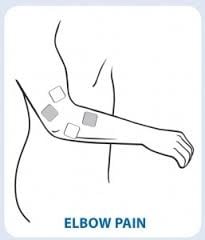
Electrode placement of TENs for elbow pain
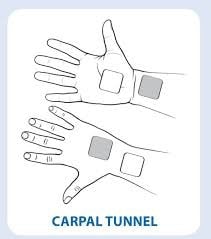
Placement of TENs electrodes for the carpal tunnel
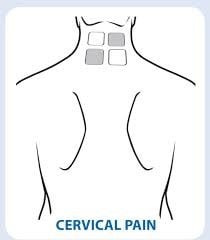
TENs electrode placement for cervical pain
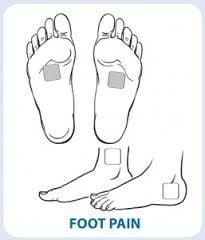
TENs electrode placement for foot pain
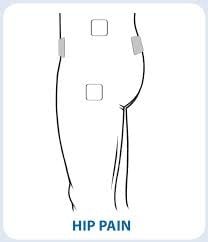
Electrode placement of TENs for hip pain
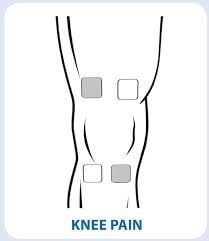
TENs electrode placement for knee pain
Some other protocols that must be adhered to when using the TENS unit are:
1- The skin must be clean and dry.
2- Apply a thin layer of gel to the bottom of each electrode. This gel helps the electrical signal reach the nerves under the skin.
3 The electrodes should be firmly pressed against the skin (an adhesive may be used to keep them in place).
4. Screw the pin connectors on the end of the electrode wires to the electrodes. Then connect the electrode wires into the TENS unit.
5. When starting treatment, adjust slowly to find the correct setting. The patient will feel a slight tingling sensation.
6.Set Timer to adhere to specific timing protocols for each patient's diagnosis.
7.Always refer to the user manual for other precautions for the TENS unit.
When treated in physical therapy, techniques are used to help reduce pain and increase function. With the TENS unit's diverse treatment applications, it is an ideal addition to many rehabilitation regimens






